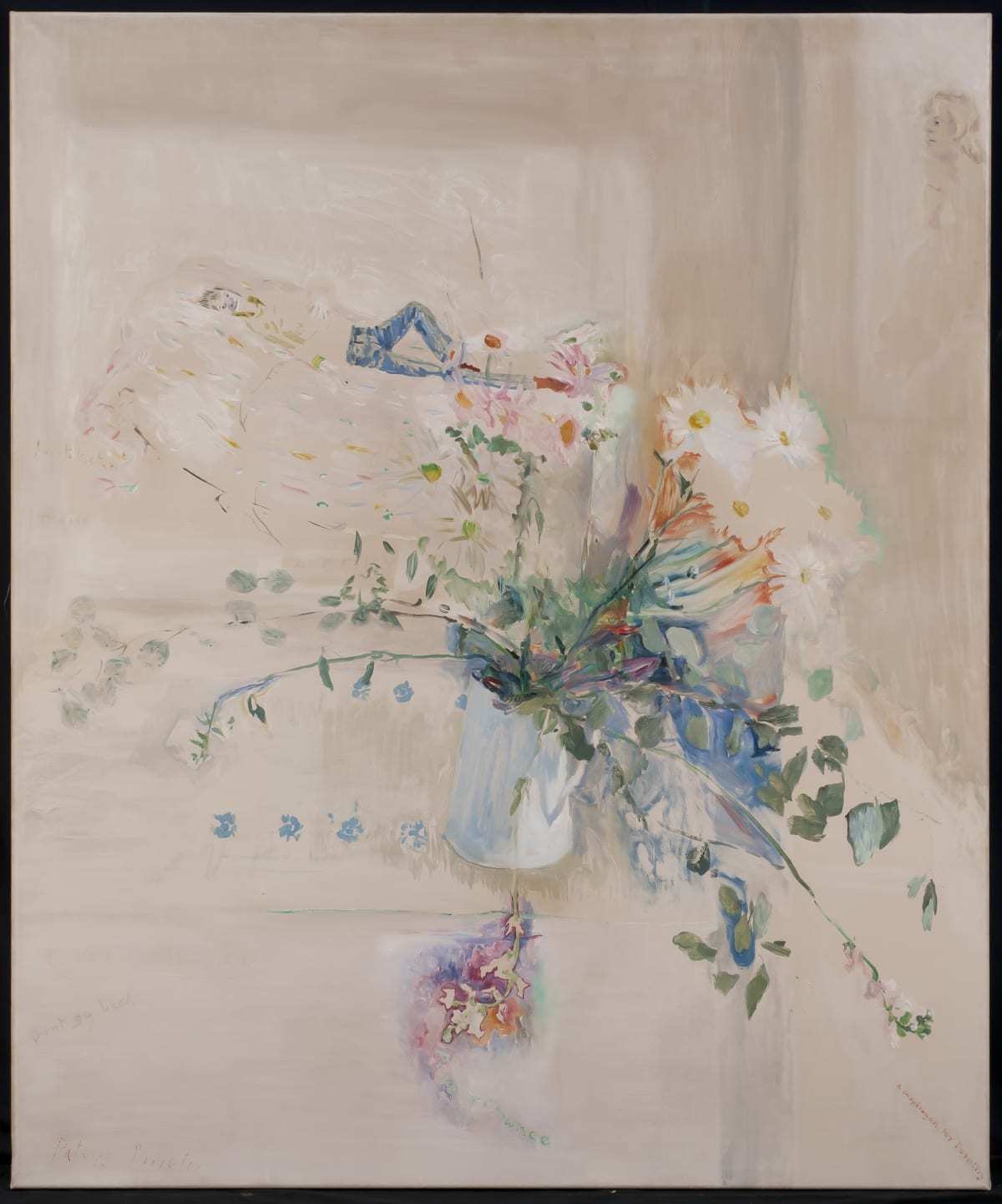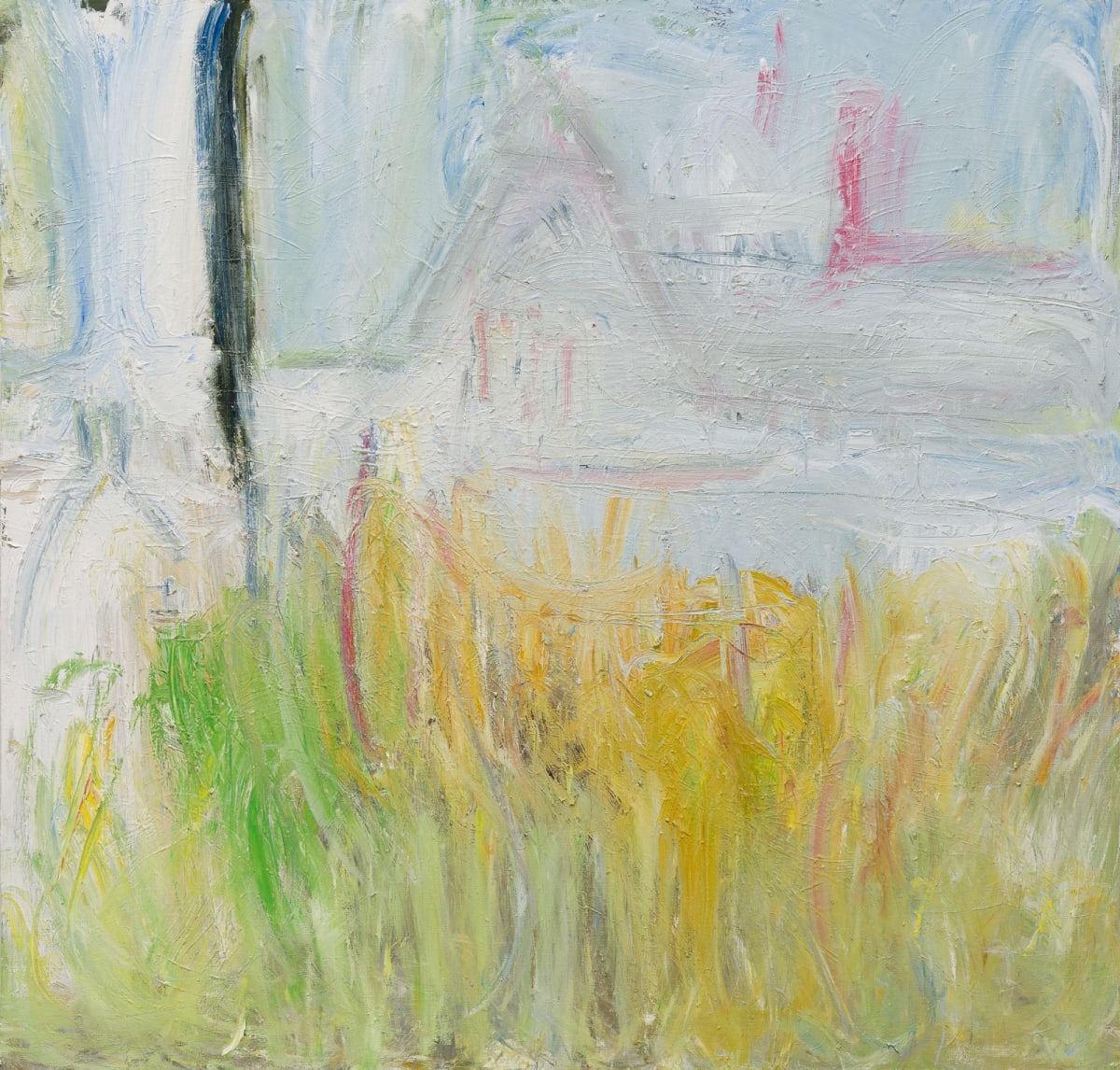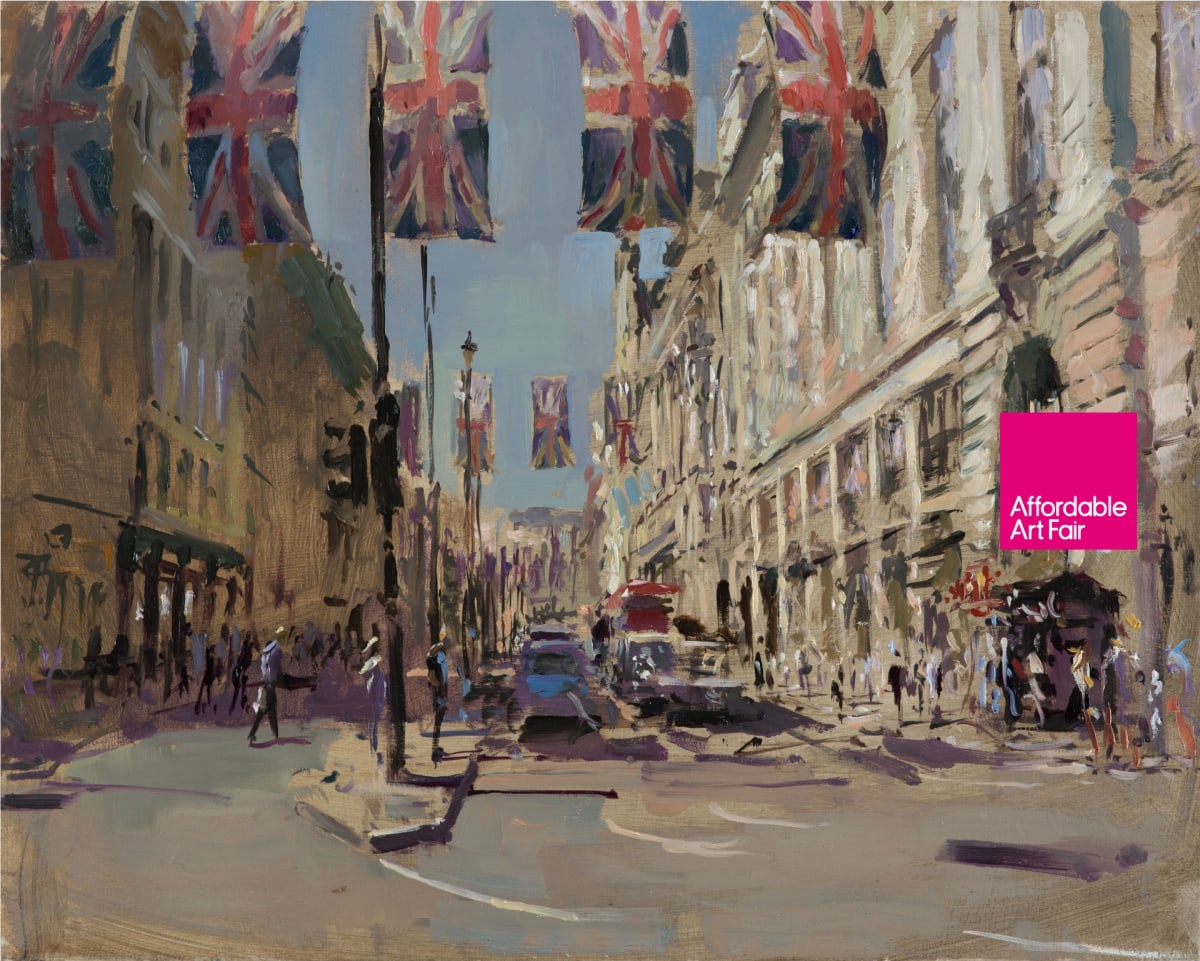Richard Cook British, b. 1947
-
Richard Cook’s paintings reflect a deep connection to the Cornish landscape, where he lives and works in Newlyn. His work often focuses on the interaction between land, sea, and sky, capturing the shifting moods of the environment. Cook’s approach is intuitive, with each painting evolving through layers of texture and colour that suggest both physical presence and emotional resonance.
His early training under Leon Kossoff, with whom he shared a studio in the 1970s, influenced his expressive handling of paint. Over time, Cook developed a distinct voice, blending observation with memory. His canvases often convey a sense of place that feels both immediate and timeless, where the boundaries between external scenery and internal reflection blur.
Cook has been exhibiting for over 25 years and has received countless awards including from the British Council, the Arts Council and The Elephant Trust Award (twice). In 2001 he was given a solo show at Tate St Ives with a related publication, and a major painting was acquired for the collection in 2006. Further works are held in the British Museum collection. Richard Cook’s work has been in countless exhibitions across the world and today sits in permanent collections at The Tate, London, The Arts Council, London, The British Museum, Manchester City Art Gallery and with Deutsche Bank, London.
-
Works
Richard Cook British, b. 1947
Head of Linda (pink)Oil on canvas
56 x 50cm
Artwork Location: Manchester Gallery£ 4,850.00VideoBiographyRichard Cook has been exhibiting for over twenty five years and has received awards from the British Council and the Arts Council. In 2001 he was given a solo show at Tate St Ives, with a related publication, and a major painting was acquired for the collection in 2006.
Richard Cook is a British painter living and working in Newlyn, Cornwall. Born in Cheltenham in 1947, he spent his early childhood in Sri Lanka. From 1966 – 70 he trained at St. Martin’s School of Art, London, and at the Royal College of Art until 1973. Whilst initially influenced by his teacher and mentor Leon Kossoff, with who he shared a studio for 3 years in the early 1970’s, Cook went on to develop his own voice and unique style inspired by the land and seascapes of Cornwall.
'What it is that Cook is in search of on each of his brief drawing visits is, of course, not identifiable beforehand. What he is certain of, however, is that when he finds what he is looking for it will be something that exists within himself as much as it does out there in the landscape he is observing. With directness he gently insists that what he paints — the images on his canvases — are in a significant sense already there. It is as if there is somewhere in him a memory that remains concealed until it can see itself reflected in the painting. [...] 'Inscape' is that design, pattern, or form that expresses the intimate interdependency between the worls as it appears in thought and the world as creation'.
[Extract from 'Scapeland and Inscape: The Landscapes of Richard Cook' an essay written by Michael Archer in Luminous — a book published by Tate St. Ives]
Exhibitions-

Modern British
25 Mar - 12 Apr 2023The Exhibition 'Modern British' refers to artists and movements from post-war Britain. Of course there are numerous artists whose work could have been included. There are many connections between artists, defined movements and clear lines of lineage that could create a magnitude of exhibitions all titled Modern British. However, our...Read more -

London Art Fair 2021
Richard Cook: A Solo Presentation 20 - 31 Jan 2021Contemporary Six is pleased to present a solo exhibition by Richard Cook for the 33rd (online) edition of the London Art Fair. From Wednesday 20th January, our stand will be open to the public. There, you can navigate our viewing room and access a series of audio clips in which the artist will speak about his process and inspiration. We will also be providing a virtual exhibiton space here on our website.Read more -

10
Contemporary Six's ten-year anniversary 12 - 24 Dec 2020download e-catalogue Join us for the mixed exhibition which celebrates our ten-year anniversary — featuring new work from a wide range of artists, and a few surprises, too! preface All of the artworks in the show are available to purchase from 7:30pm on Friday 27 November online or over the...Read more -

Winter Show 2019
Mixed work featuring brand new artists 7 Dec 2019 - 2 Jan 2020Save the Date for the Preview Weekend of our 2019 Winter Show from 12pm on Saturday 7th until 5pm on Sunday 8 December 2019.Read more
With brand new work from Gallery-artists Rob Pointon, Peter Stanaway, David Bez, Kate Collins, and others, join us for the festivities; walls on both floors of the Gallery will be freshly hung with paintings from some of the leading artists in the region.
As part of our Winter Show, we are proud to announce the inclusion of some beautiful plein air and interior works by Peter Brown ROI NEAC; the ceramics of multi-award winning potter Phil Rogers; the magical tempera landscapes of Helen Clapcott; and two electric abstracts from one of Britain's most important exponents of abstract art: Sir Terry Frost RA.
FAQs
Richard Cook is a British painter born in 1947 in Cheltenham, England. He is widely recognised for his expressive and emotionally charged landscape paintings, which often reflect his deep connection to nature. Cook has spent much of his career exploring the British countryside through paint, capturing shifting light, weather, and the changing seasons with bold brushwork. He currently lives and works in Newlyn, Cornwall, where the surrounding coastline and natural environment continue to inspire his work. His paintings are known for their energy, texture, and strong sense of place.
Richard Cook studied at St. Martin’s School of Art in London from 1966 to 1970, where he developed a strong foundation in painting and drawing. His time there exposed him to a range of artistic movements and ideas that helped shape his early style. After graduating, he continued his education at the Royal College of Art, completing his studies in 1973. During this period, Cook refined his approach to landscape painting, deepening his interest in expressive mark-making and the emotional impact of natural settings, themes that remain central to his work today.
Richard Cook’s paintings often explore the natural landscapes of Cornwall, where he captures the essence of the environment with expressive, energetic brushwork. His work focuses on the shifting relationship between light, form, and atmosphere, using layered textures and bold marks to convey the spirit of the landscape. Rather than offering detailed representations, Cook aims to evoke the emotional experience of being in nature. The coastline, open skies, and rugged countryside of Cornwall provide a constant source of inspiration, deeply influencing the mood and rhythm of his paintings.
Richard Cook has exhibited widely throughout his career, gaining recognition for his powerful landscape paintings. In 2001, he held a solo exhibition at Tate St Ives, a major milestone that highlighted his connection to Cornwall and its artistic heritage. His work is also included in major public collections, such as the Tate and the British Museum, where it is valued for its emotional depth and expressive technique. Cook’s ability to capture the energy of the natural world has made his paintings highly regarded by curators, collectors, and fellow artists alike.
Richard Cook is known for his rapid and instinctive painting style, often working directly with his fingers rather than relying on traditional brushes. This hands-on approach allows him to apply thick layers of oil paint, creating rich, textured surfaces that bring a sense of movement and immediacy to his work. The physical act of painting is central to his process, with marks and gestures reflecting his response to the landscape. This dynamic method helps capture the energy and atmosphere of the natural world, making each painting feel alive and spontaneous.
While Richard Cook’s specific influences are not widely detailed, his work clearly reflects a deep and lasting connection to the Cornish landscape. His paintings show a strong commitment to capturing the fleeting qualities of light, weather, and atmosphere found along the coast and countryside. Rather than focusing on exact details, Cook’s art conveys the energy and movement of the natural world through expressive marks and textured surfaces. His sensitivity to place and the changing environment gives his work a powerful emotional depth that resonates with many viewers.







